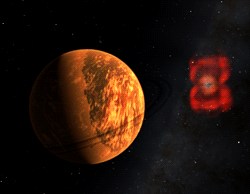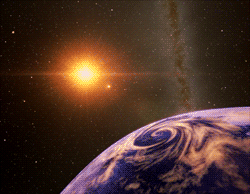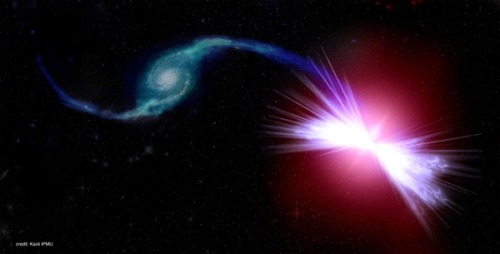Nebula Images: Http://nebulaimages.com/

Nebula Images: http://nebulaimages.com/
Astronomy articles: http://astronomyisawesome.com/
More Posts from Space-and-stuff-blog1 and Others

This gigantic lens, built for NASA to record space launches, is up for sale: http://bokeh.digitalrev.com/article/gigantic-1000mm-nasa-lens-up-for-sale



This is the fourth week of Red, White and Blue Stars Month!
This week’s entry: Types of Stars
http://typeslist.com/different-types-of-stars/
![Original Photo By Jrhfoto : [OC] Stars Over The Blue Ridge Parkway [1333 × 2000] Photo From /r/SkyPorn:](https://64.media.tumblr.com/056c3f1840ee5b1c5c912aa80e07929d/tumblr_o8ou7jNxJ31u721dwo1_500.jpg)
Original Photo by jrhfoto : [OC] Stars over the Blue Ridge Parkway [1333 × 2000] Photo from /r/SkyPorn: http://ift.tt/1ZJv7wW Courtesy of IFTTT.

Enceladus, the sixth-largest moon of Saturn
js




Anticrepuscular rays are spectacular optical phenomena that are quite rare and they require the viewer to have his or her back to the sun or sunset point. They are columns of sunlit air streaming through gaps in clouds. Yet while the former seem to converge from the sun, anticrepuscular rays converge toward the antisolar point, the point in the sky directly opposite the sun, creating some stunning effects. (Source)



Afraid of Global Warming? Well, now there’s Galactic Warming from our dear friends, those super-massive black holes lurking just about everywhere a galaxy has sprouted up.
These wacky systems are so extreme as to completely skip out of many generations of new stars, leaving a severe stellar age gap in these galaxies, given an entirely new class called “red geysers”.
[First two images are gifs from “Space Engine”, the second is a rendering of the red geyser Akira galaxy sapping off of Tetsuo, it’s neighbor ]

Cassini: Saturn, June 12th 2016
W00099641.jpg was taken on 2016-06-12 07:28 (UTC) and received on Earth 2016-06-12 14:57 (UTC). The camera was pointing toward SATURN, and the image was taken using the CL1 and IR1 filters. This image has not been validated or calibrated. A validated/calibrated image will be archived with the NASA Planetary Data System.
Image Credit: NASA/JPL-Caltech/Space Science Institute
-
 orionredstarr liked this · 8 years ago
orionredstarr liked this · 8 years ago -
 mega-dangerouslyfun-blog liked this · 8 years ago
mega-dangerouslyfun-blog liked this · 8 years ago -
 ndragoon liked this · 8 years ago
ndragoon liked this · 8 years ago -
 officialandromeda reblogged this · 8 years ago
officialandromeda reblogged this · 8 years ago -
 marcus711 reblogged this · 8 years ago
marcus711 reblogged this · 8 years ago -
 marcus711 liked this · 8 years ago
marcus711 liked this · 8 years ago -
 not-that-into-labels reblogged this · 8 years ago
not-that-into-labels reblogged this · 8 years ago -
 20-octombrie-12-blog reblogged this · 8 years ago
20-octombrie-12-blog reblogged this · 8 years ago -
 20-octombrie-12-blog liked this · 8 years ago
20-octombrie-12-blog liked this · 8 years ago -
 lefataleni reblogged this · 8 years ago
lefataleni reblogged this · 8 years ago -
 nnowhereman reblogged this · 8 years ago
nnowhereman reblogged this · 8 years ago -
 darklordshish liked this · 8 years ago
darklordshish liked this · 8 years ago -
 oursofttourniquet-blog reblogged this · 8 years ago
oursofttourniquet-blog reblogged this · 8 years ago -
 oursofttourniquet-blog liked this · 8 years ago
oursofttourniquet-blog liked this · 8 years ago -
 autonecrologia reblogged this · 8 years ago
autonecrologia reblogged this · 8 years ago -
 space-and-stuff-blog1 reblogged this · 8 years ago
space-and-stuff-blog1 reblogged this · 8 years ago -
 space-and-stuff-blog1 liked this · 8 years ago
space-and-stuff-blog1 liked this · 8 years ago -
 beautifulnudewoman liked this · 8 years ago
beautifulnudewoman liked this · 8 years ago -
 metalmonger reblogged this · 8 years ago
metalmonger reblogged this · 8 years ago -
 metalmonger liked this · 8 years ago
metalmonger liked this · 8 years ago -
 whattheworldisreallylike-blog reblogged this · 8 years ago
whattheworldisreallylike-blog reblogged this · 8 years ago -
 dreddysperrybear liked this · 8 years ago
dreddysperrybear liked this · 8 years ago -
 gilgamunch reblogged this · 8 years ago
gilgamunch reblogged this · 8 years ago -
 bunnymccreampuff liked this · 8 years ago
bunnymccreampuff liked this · 8 years ago -
 bunnymccreampuff reblogged this · 8 years ago
bunnymccreampuff reblogged this · 8 years ago -
 hellraiserdvine liked this · 8 years ago
hellraiserdvine liked this · 8 years ago -
 euphoriameow reblogged this · 8 years ago
euphoriameow reblogged this · 8 years ago -
 euphoriameow liked this · 8 years ago
euphoriameow liked this · 8 years ago -
 kabak22-blog liked this · 8 years ago
kabak22-blog liked this · 8 years ago -
 mewmoew liked this · 8 years ago
mewmoew liked this · 8 years ago -
 not-that-into-labels liked this · 8 years ago
not-that-into-labels liked this · 8 years ago -
 telegantmess reblogged this · 8 years ago
telegantmess reblogged this · 8 years ago
Just Space, math/science and nature. Sometimes other things unrelated may pop up.
119 posts



